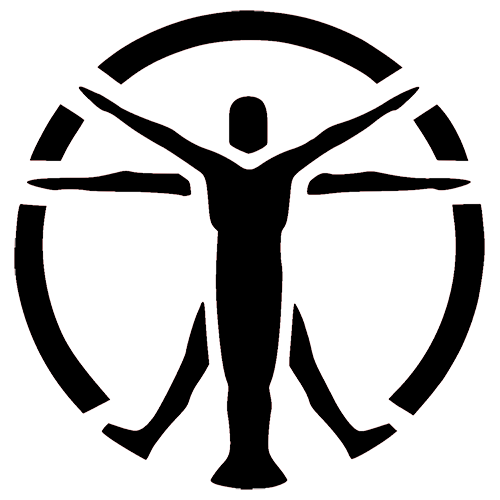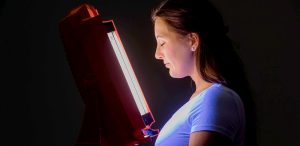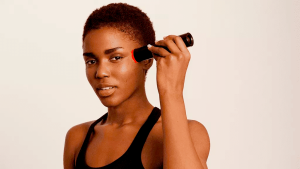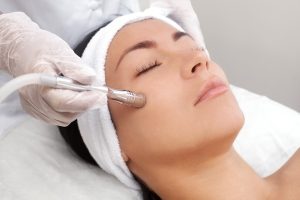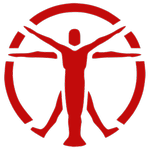In a newborn baby, many changes take place in the body at all levels. They regulate the functions of the organs, like settings. Acne in newborns is one of the stages of adaptation to new environmental conditions.
Although acne is one of the most common skin conditions that develop in babies, watching these rashes appear can be a stressful time for parents.
In this article, we have prepared information on what baby acne is, its causes, and also its distinctive characteristics. Based on this, we have prepared the most popular methods of treating children’s acne, as well as tips for caring for your baby during this period. One of the underestimated, but effective methods of treatment is light therapy, the effectiveness of which we have studied based on scientific research.
What is baby acne?
In the first weeks after birth, 30-35% of babies develop symptoms of characteristic rashes. Baby acne predominantly occurs at the end of the first week of life, but the typical time frame can be extended to 6 months.
Baby acne is similar to the pimples that many teens and adults have experienced — hard red bumps surrounded by red, inflamed skin. White pustules (whiteheads) can form on these bumps, just like in adults.
Causes of baby acne

Hormones
One of the most common causes of baby acne is exposure to maternal hormones. Exposure can occur while the baby is in the womb or through breastfeeding.
But in no case do not stop feeding the newborn, unless your doctor tells you to. Even if the hormones of breast milk cause acne in the baby, along with them, the nutrients that the baby needs come to them.
Yeast
Another reason is that certain strains of yeast living on your baby’s skin are causing your baby to get acne. In particular, the yeast species Malassezia. As the yeast colonizes the surface of the newborn’s skin, the baby’s skin becomes inflamed and the baby will develop acne.
Probiotic imbalance
Another possible reason is that baby acne is caused by an imbalance of in your baby’s stomach. When babies are very young, they still try to acquire the right bacteria and maintain a healthy balance in their belly.
Drug reactions
Certain medications and viral diseases can also cause acne on your child’s body. If your baby develops a rash or pimple-like rash after getting sick or taking a new medication, tell your doctor right away.
How to distinguish baby acne from other skin conditions?
Sometimes baby acne can be difficult to identify.
Here are some general guidelines for distinguishing baby acne from other skin conditions that can often look very similar:
Allergic reaction

These rashes usually appear quickly, sometimes in as little as 10 minutes. The main difference between acne and allergic rashes is localization. With acne, the rash is usually on the face. With allergies, the rash can be located all over the body. Often, allergic reactions manifest as hives, while in acne, the rash will include pustules (blisters with purulent contents).
If you’ve recently started using a new skincare product for your child or introduced new foods to your child’s diet, and now a rash is starting to appear, an allergic reaction is likely to blame.
Heat rash

Heat rash, as the name suggests, usually occurs when it’s hot outside. It also forms in the hottest areas on the baby’s body, such as the armpits, feet, wrists, and neck. At the same time, acne is characterized by pimples on the face.
Eczema

Eczema is a condition that causes dry, flaky skin. Although redness is associated with both eczema and baby acne, eczema usually doesn’t cause pimples. Acne results in oily skin, in contrast to the dry, flaky skin that babies with eczema typically experience.
Infection (measles, chickenpox, rubella)

Each of the infectious diseases is characterized by a certain location of the rash, accompanied by specific symptoms. Baby acne has nothing to do with these diseases — it proceeds without changes in body temperature, changes in appetite, and sleep patterns, in contrast to infectious diseases.
Ways to get rid of baby acne
Baby acne can last from a few days to several months. If they do not provide any discomfort and are mild, they do not need to be treated. It is recommended to wait until the acne disappears on its own.
But if they disturb the baby, size increases, and do not go away for a long time, you should consult a doctor who will determine the cause and prescribe the appropriate treatment.
For the treatment of more serious forms, the following methods are most often used:
Healing cream or ointment
One of the most popular treatments is a medicated cream or ointment. However, it should be borne in mind that the baby’s skin is very sensitive at this age. Therefore, the use of ointments often provokes skin peeling and irritation at the site of application.

Iodine
Often, parents, when they see acne on a baby’s face, use iodine, since this substance has a drying and antibacterial effect. However, it is worth considering the delicate skin of the baby, when interacting with iodine, chemical burns may occur, which will provide even more discomfort.
Light therapy
An increasingly popular treatment for acne, including childhood acne, has been proven to be effective in dozens of studies. Light therapy (UVB) has been shown to have an antibacterial effect that can help reduce symptoms and heal baby acne.
They are believed to help cleanse the skin and reduce inflammation. However, it should be emphasized that this method often does not give any effects, but only exacerbates the situation. Herbal infusions can cause allergic reactions, peeling, and irritation of the skin.
Read more about light therapy pros and cons in our article.
How does light therapy works for baby acne
Phototherapy is a treatment with a special light. Two main types of ultraviolet rays reach the earth’s surface — UVB (280-315 nm) and UVA (315-400 nm).
The ability of the beam to penetrate the skin is proportional to the wavelength of the radiation. A longer wavelength UVA can penetrate deep into the dermis of the skin, while UVB only reaches the epidermis. The energy of light is inversely proportional to the wavelength. UVB has much more energy than UVA.
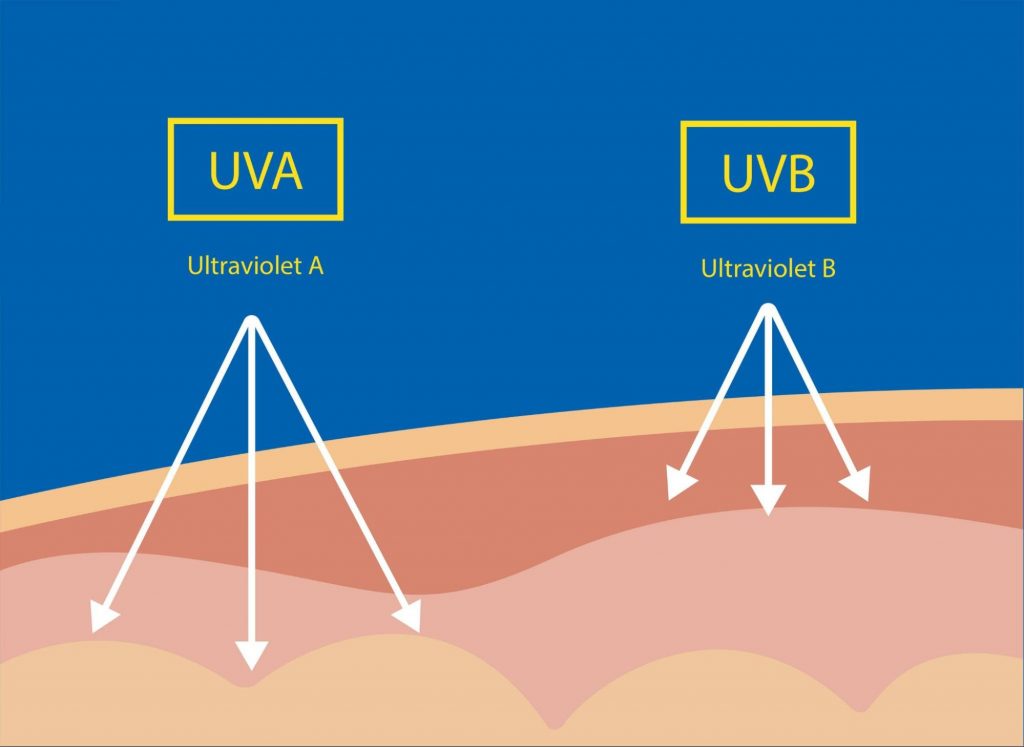
To date, two radiations are used in the UVB spectrum:
- Broadband UV-B (290-320 nm);
- Narrow-band UV-B radiation (311-313 nm).
Narrowband UV-B has proven to be a fast and effective way to treat a variety of skin conditions, including baby acne.
Ultraviolet light has anti-inflammatory and antibacterial properties. It fights bacteria and is an effective treatment for moderate to severe rashes. Also, this light therapy helps prevent future breakouts and bacterial skin infections.
For children, phototherapy is used as follows: the baby is placed under a halogen or fluorescent lamp with eyes closed. The duration of the session and the number of procedures are determined based on the size of the affected areas of acne.
The effectiveness of light therapy on baby acne: based on scientific research
Narrow-band ultraviolet B (UVB) phototherapy is a well-established treatment for a range of skin conditions, including acne.
Studies below support this statement.
A study [1] was conducted in a pediatric hospital to determine the effectiveness of narrow-band UVB treatment for many skin conditions, including baby acne. A total of 77 children underwent treatment, who received from 10 to 24 treatment sessions, depending on the stage of the disease. By the end of treatment, 68% of acne patients were treated.
The result of the treatment of one of the patients is presented below.

Source: US National Library of Medicine, National Institutes of Health
The following study [2] was examining two UV lamps for their antibacterial efficacy. Propionibacterium and Micrococcaceae bacteria-founded acne patients were irradiated with a narrow-band UV lamp (313 nm) and a UVA1 lamp (345-440 nm). As a result, UVA1 did not suppress the growth of either Propionibacterium or Micrococcaceae bacteria. But, with the UVB lamp, on the contrary, the growth of bacteria was suppressed even at the lowest dosage.
The latest study [3] includes three pieces of research to investigate the clinical effects of narrow-band light on acne. The studies involved 10, 13, and 23 patients, respectively. The result showed an over 80% response to acne phototherapy with a significant reduction in inflammatory acne lesions by 59-67% after just 8 treatments of 8-15 minutes.
This leads to the conclusion that narrow-band UV-B phototherapy is a useful and well-tolerated treatment for children with moderate to severe inflammatory skin conditions, including baby acne.
Tips to prevent baby acne
The neonatal period is the best time to develop smart baby skin care habits that can help treat baby acne:
Don’t use flavors
The chemicals in artificial fragrances can irritate a baby’s sensitive skin. If possible, try hypoallergenic products, including lotions, shampoos, and laundry detergents, to help prevent acne in newborns.
Don’t use greasy creams or lotions
Acne — whether in children, teens or adults — is caused by blocked pores. Dirt and oil get stuck around the hair follicle and create a plug that irritates the surrounding skin. Visually, this is the redness and swelling that are so often associated with acne. Since acne is caused by a buildup of oil and dirt, it is best to avoid using oily creams and lotions on acne-prone skin.
Don’t rub your baby’s skin with a rough cloth
The rough tissue can make your child’s acne worse, further irritating already sensitive skin. Dress your child in soft clothing and keep their skin away from wool and other coarse fibers.

Maintain a healthy diet while breastfeeding
Most mothers choose to exclusively breastfeed their newborns for the first few months of a baby’s life, if not longer. This means that the only nutrients the baby receives come directly from breast milk. Therefore, mothers who are breastfeeding should be especially careful with what they eat, so that it does not later affect the baby’s skin.
Don’t let your baby scratch or pick acne
The swelling and itching can make your baby scratch, rub, or pinch his pimples without even realizing it. If you see your baby’s skin becoming redder and more swollen, or if you see your baby rubbing inflamed areas, it’s time to cover their hands with mittens or soft gloves.
Summary
Acne on the face of a newborn is a common occurrence that does not pose any hidden threats to health.
If acne on your child’s body is in an active phase and does not decrease, we recommend contacting your pediatrician. He will determine the nature of the rash, establish the bacterial or infectious nature of the occurrence, and also prescribe the appropriate treatment.
One of the underrated yet effective treatments for baby acne is UVB therapy. Due to its anti-inflammatory and antibacterial effect, this method of treatment has established itself as an effective way to cleanse the skin.
Also, when treating and preventing acne in the future, it is recommended to follow simple rules. They consist of daily water procedures, the elimination of fatty creams and products with flavors, as well as adhering to a healthy diet while breastfeeding.
FAQ:
👶 What is baby acne?
Baby acne is acne that occurs most often on the face and neck, appearing in children in the first months of life.
🤓 How to distinguish baby acne from other skin conditions?
The main difference between acne and allergic rashes is the localization, type of rash, and the child’s general condition. With acne, the rash is usually on the face. With allergies, the rash can be located all over the body. With the development of heat rashes, on the contrary, a small rash forms on the skin of the body, and there are no rashes on the face. Infectious diseases (measles, chickenpox, rubella), proceeds with an increase in body temperature, a change in appetite and sleep patterns, in contrast to baby acne.
🔎 How to get rid of baby acne?
The most popular methods for getting rid of baby acne include:
– Healing cream or ointment;
– Iodine;
– Traditional medicine;
– Light therapy.
Based on the mentioned methods, it is worth noting that light therapy (UVB) is the most effective.
👩🍼 How to take care of a baby with acne?
– Don’t use flavors;
– Don’t use greasy creams or lotions;
– Do not rub your baby’s skin with a rough cloth;
– Eat a healthy diet while breastfeeding;
– Don’t let your child scratch or pick pimples.
Read more about tips for caring for baby acne in our article.
Sources
- C. S. Jury, P. McHenry, A. D. Burden, R. Lever, D. Bilsland. Narrowband ultraviolet B (UVB) phototherapy in children. – Clin Exp Dermatol. 2006 Mar;31(2):196-9. DOI: 10.1111/j.1365-2230.2006.02061.x.
- J. W. Fluhr, M. Gloor. The antimicrobial effect of narrow-band UVB (313 nm) and UVA1 (345-440 nm) radiation in vitro. Photodermatol Photoimmunol Photomed. Oct-Dec 1997;13(5-6):197-201. DOI: 10.1111/j.1600-0781.1997.tb00230.x.
- Monica Elman, Michael Slatkine, Yoram Harth. The effective treatment of acne vulgaris by a high-intensity, narrow-band 405-420 nm light source. – J Cosmet Laser Ther. 2003 Jun;5(2):111-7.
